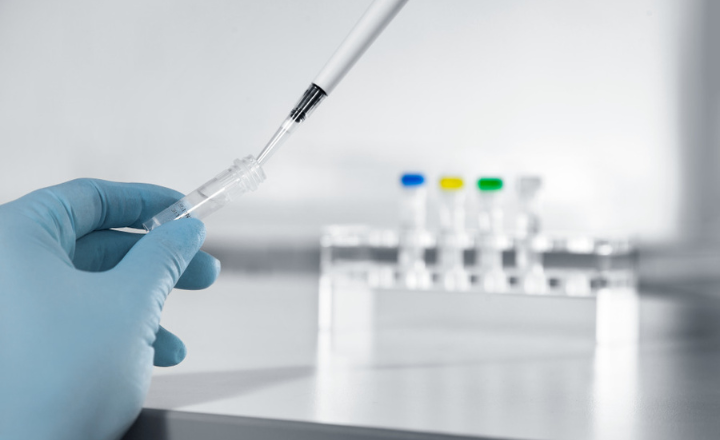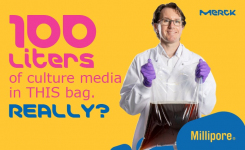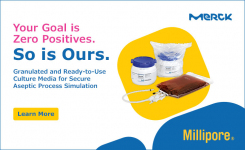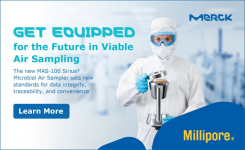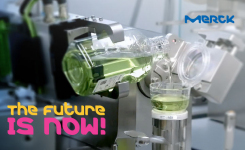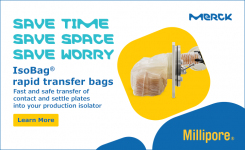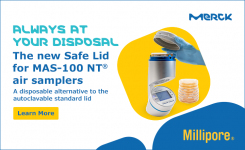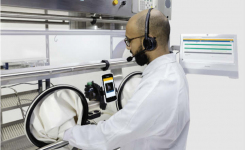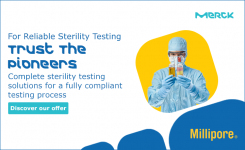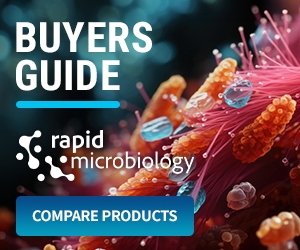More and more alternative rapid microbiological methods (RMMs) are being implemented by pharmaceutical and biopharmaceutical companies. They allow faster release of products to market, which is particularly important for short shelf-life products such as compounded sterile preparations, positron emission tomographic (PET) products, and cell and gene therapeutics. The reduction of batch holding times is a further strong driver for implementing RMMs. Here we interview Lamin Jallow, Microbiology Technology Specialist for the Life Science business of Merck, about the challenges that labs are facing with the implementation of RMMs for bioburden and sterility testing.
Q: Lamin, what do you see as the main advantages of RMMs?Lamin: The compendial microbiological tests usually require long incubation times, for example a minimum five days to test water for injection on R2A Agar, 5 to 7 days for the microbial contamination of non-sterile products, and 14 days for sterility testing. RMMs can reduce the time to result significantly. The Milliflex® Rapid System 2.0, for example, takes only about one quarter of the time that the compendial method does for water and bioburden testing, while sterility tests can be performed in only 5 days. In addition, RMMs often pave the way for the simultaneous implementation of automation and operator-independent evaluation of the results.
Q: What’s the current regulatory acceptance for RMMs?
Lamin: Alternative rapid methods are increasingly being accepted by the regulatory bodies. The FDA’s Aseptic Processes guideline stated back in 2004 that “Other suitable microbiological test methods”, which includes rapid test methods, can be considered for environmental monitoring, in-process control testing, and finished product release testing after it has been demonstrated that they are equivalent to compendial methods. A similar statement is contained in the current EU GMP Annex 1.
USP, the European Pharmacopoeia, and PDA underline the importance of RMMs by publishing specific chapters on this topic. For example, USP chapter 1223, EP chapter 5.1.2 as well as PDA Technical Report No. 33 give guidance on the validation and implementation of alternative RMMs. USP chapters 72 and 73 and EP chapter 2.6.27 describe well-established alternative techniques especially for short shelf life products such as cell-based preparations, among them ATP bioluminescence-based rapid microbial detection.
Q: The Milliflex® Rapid System has been relaunched – what’s changed?
Lamin: The new Milliflex® Rapid 2.0 system is based on the same proven technologies as its predecessor. The testing process starts with membrane filtration of the sample and incubation of the membrane on solid agar. After a much shorter incubation than for the compendial method, microcolonies that are still much too small to be visible to the naked eye undergo an enzymatic ATP bioluminescence reaction that leads to light being emitted where they are present. This allows the CFUs to be detected and counted.
We have developed a brand-new detection tower, which makes use of a state-of-the-art sCMOS camera and comes with a new 21 CFR part 11 compliant software to be installed on a standard lab PC. In an assessment study, we proved that the physical performance and sensitivity of the new Milliflex® Rapid 2.0 Detection Tower is equivalent to that of its predecessor. The amount of ATP required for luminescence detection of a microcolony by the new detection tower is about 200 attomoles, which is the detectable ATP amount of a single yeast or mold cell or approximately 100 bacterial cells, depending on their metabolic state.
We found that the new tower’s microbiological detection performance was slightly better than that of the legacy tower for 8 of the 9 tested microorganisms, a panel that included a yeast, a mold, and bacterial strains. Our assumption is that it discriminates merged colonies at an earlier growth stage, leading to higher counts. Details of the study can be made available on request.
Q: How does the Milliflex® Rapid method compare to the compendial method in terms of accuracy?
Lamin: To be used for bioburden testing, the accuracy of a quantitative RMM must be validated. This is defined as the closeness of the test results obtained by the alternative method to those obtained by the pharmacopeial method and is usually expressed as the percentage of recovery. The accuracy of the Milliflex® Rapid System 2.0 method was determined over the practical range of between 5 and 100 CFUs, again using a panel of 9 microorganism strains. The Milliflex® Rapid method counts were found to be equivalent to the counts when using the compendial Milliflex® Oasis® method at 30% divergence thresholds.
Q: How does the Milliflex® Rapid method compare to the compendial method for sterility testing?
Lamin: The parameters for our validation were those stated in USP chapter 1223 and EP chapter 5.1.6. Our validation strategy was based on the qualitative method approach, and we tested the Milliflex® Rapid method against the compendial Steritest® membrane filtration method. The parameters for which we tested were detection limit, robustness, ruggedness, specificity, and equivalence. The filtration step for rapid sterility testing is performed under an isolator, so we also tested for the absence of bacteriostasis and fungistasis caused by VHP being used during an isolator decontamination cycle. The Milliflex® Rapid method met the acceptance criteria of all the tests performed to demonstrate that its results are equivalent to or better than those achieved with the compendial method. This validation study, too, is available on request.
Q: Is the Milliflex® Rapid System 2.0 a good option for ‘difficult’ products such as cell and gene therapeutics?
Lamin: Samples containing cell or gene therapeutics tend to be difficult to filter, so they require an additional step to the standard workflow with the Milliflex® Rapid System 2.0. We have developed a protocol that selectively lyses the mammalian cells in the sample to make it filterable while maintaining the viability of any contained microorganisms. However, the feasibility of this lysis step must be determined separately for each product. Cell and gene therapeutics samples also tend to contain high amounts of ATP. This, however, is no issue at all as the Milliflex® Rapid method relies on membrane filtration, a perfect technique to rinse away the free ATP in a sample.
Q: Did you test for stressed organisms?
Lamin: For the detection of stressed microorganisms, removing stress factors, e.g., thiomersal in vaccines, can be removed efficiently by the filtration step with low-binding protein membranes. Furthermore, the selection of a suitable culture medium, in combination with optimized incubation temperatures, is very important. It has been published that using the RSTM medium under 3 different incubation conditions is even significantly more sensitive in detecting various microorganisms at very low CFU levels than the compendial methods and that the RSTM medium achieves very good recoveries of several microorganisms which have been stressed by heat, UV light or the addition of an anti-bacterial pharmaceutical drug.
Q: What must a lab do to implement the Milliflex® Rapid method for routine testing?
Lamin: We use regulatory guidance to assist our customers when they intend to implement the method, offering both documentation and services. Two levels of validation are required. Primary validation, which we, as the supplier, perform, covers LOD, specificity, robustness, precision, and sample pretreatment. This doesn’t need to be repeated by the customer. Secondary validation, the validation for the specific intended use, must be performed in the lab of the user. It covers IQ/OQ/PQ and verification of the primary validation performed by the supplier, including a limit of detection testing in the presence of the specific product, method suitability, and equivalence testing to determine that the rapid method is not inferior to the compendial method.
Q: Can you share an example of where a lab has successfully implemented the Milliflex® Rapid method? Why did they switch?
Lamin: We collaborated with a client who needed a rapid technology that allowed them to release a product within a week. What they do is harvest specific cell samples from a patient, process the sample, and insert their technology into the cells. After insertion, the cell sample goes through QC testing before it is administered back into the patient. All this should be completed within a week. However, the traditional sterility test method requires a 14-day incubation, so they would have needed to administer the personalized therapeutic at-risk pending test results. We assisted them in validating the Milliflex® Rapid method for product release within 4 days. This gives them enough time to produce their therapeutic and make sure it is safe before being administered back into the patient.








